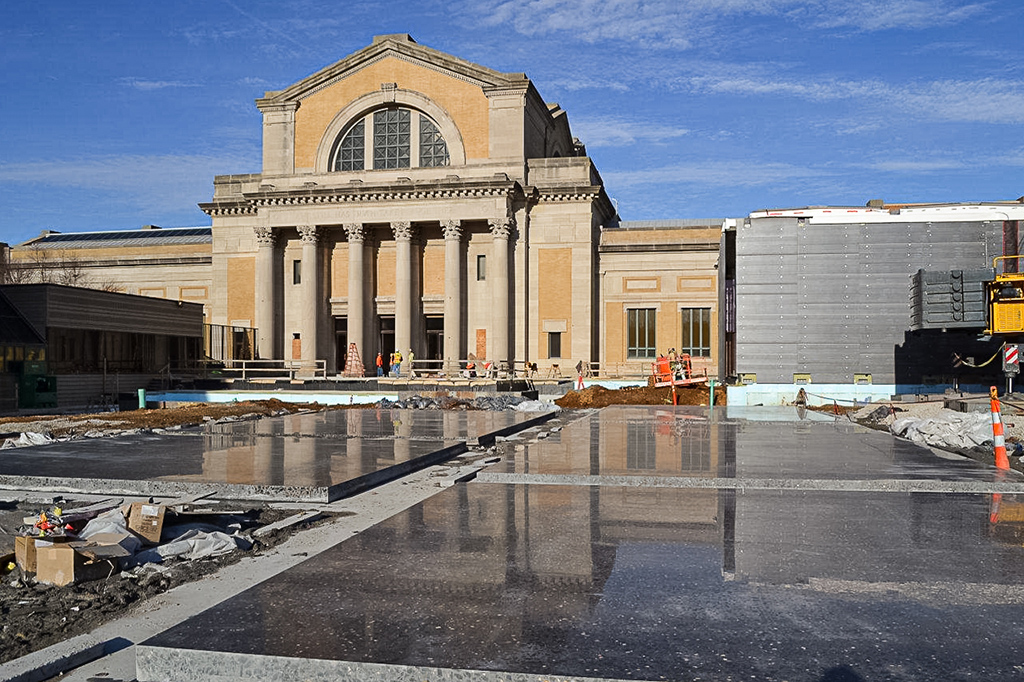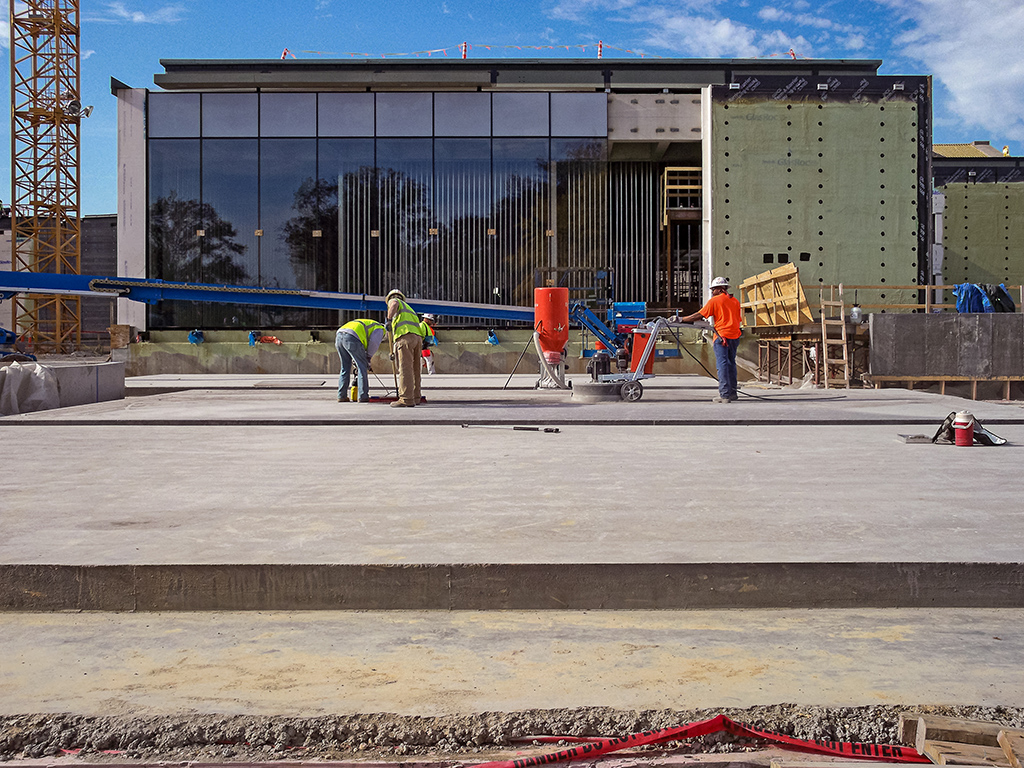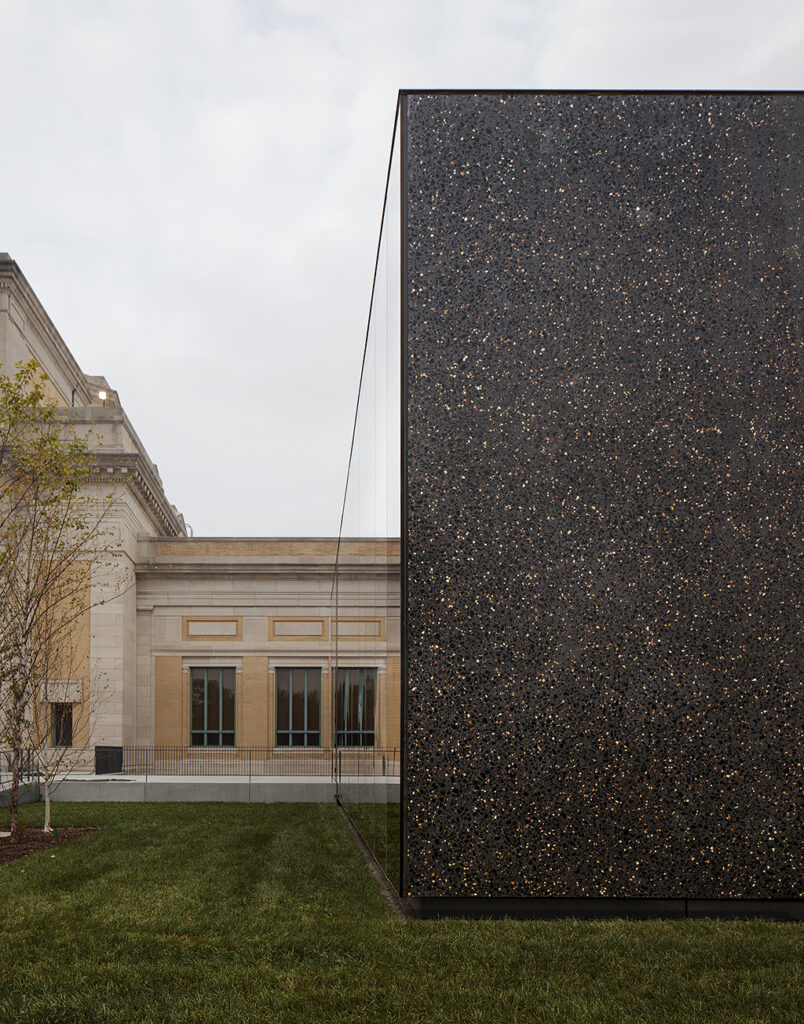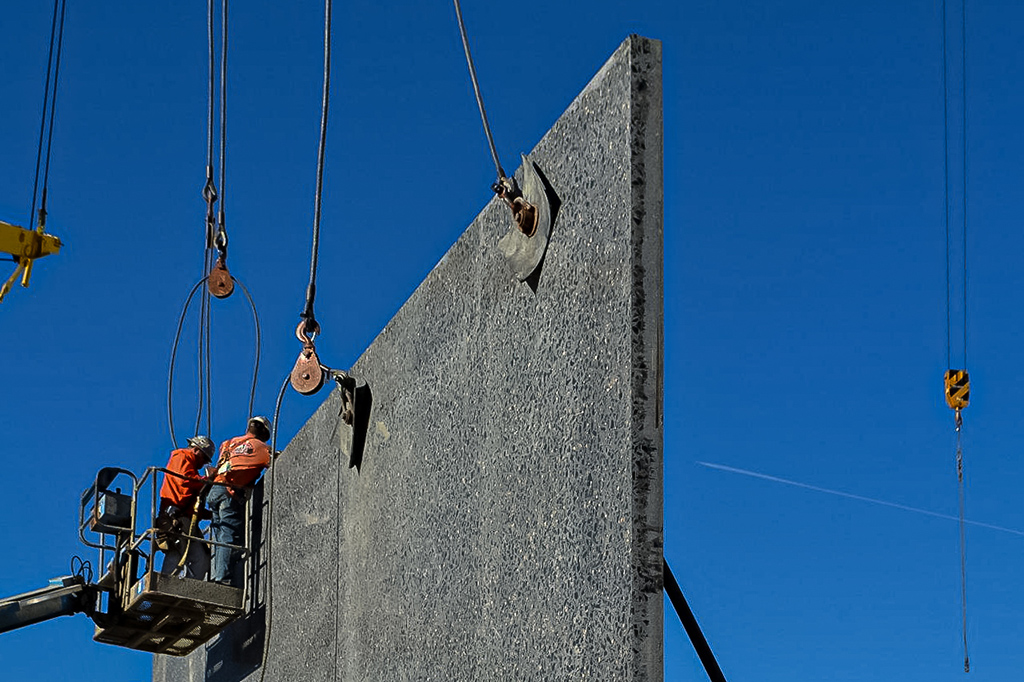Local Materials and Ordinary Techniques
Español | Español | Translation Sponsored by TCA
By Mitch Bloomquist, executive director, Tilt-Up Concrete Association
Images by Simon Menges

Civic architect, urban planner, and activist Sir David Alan Chipperfield, CH, was selected as the 2023 Laureate of the Pritzker Architecture Prize, which is internationally regarded as architecture’s highest honor. Chipperfield is the fifty-second laureate of the Pritzker Architecture Prize. He resides in London and leads additional offices in Berlin, Milan, Shanghai, and Santiago de Compostela.
The 2023 jury citation of the laureate states, “This commitment to an architecture of understated but transformative civic presence and the definition—even through private commissions—of the public realm, is done always with austerity, avoiding unnecessary moves and steering clear of trends and fashions, all of which is a most relevant message to our contemporary society. Such a capacity to distill and perform meditated design operations is a dimension of sustainability that has not been obvious in recent years: sustainability as pertinence, not only eliminates the superfluous but is also the first step to creating structures able to last, physically and culturally.” The jury citation commends Chipperfield’s use of “local materials in luxurious ways, ordinary techniques in complex structures,” an observation that impeccably describes a selected work that has great importance for the tilt-up industry: his expansion of the Saint Louis Art Museum (Missouri, United States, 2013). In celebration of this recognition, we’re taking another look at the project and its incredibly beautiful application of tilt-up technology.
The Saint Louis Art Museum, located in Forest Park in Saint Louis, Missouri, sits atop Art Hill overlooking the Grand Basin, the central gathering place for the 1904 World’s Fair. The museum is home to one of the most comprehensive art collections in the United States of America. Founded in 1879, the Saint Louis Art Museum, according to its mission, “collects, presents, interprets, and conserves works of art of the highest quality across time and cultures; educates, inspires discovery, and elevates the human spirit; and preserves a legacy of artistic achievement for the people of St. Louis and the world.”

Designed by renowned American architect Cass Gilbert for the 1904 Louisiana Purchase Exposition, also known as the World’s Fair, the Saint Louis Art Museum’s original structure was the only building from that World’s Fair designed to be permanent. The building has undergone several modifications and additions, including an administrative wing, auditorium, and conservation wing, added from 1980–1985. A major gallery addition (East Building), designed by London architect David Chipperfield, opened in 2013.
Without disrupting the monumentality of the museum’s original Cass Gilbert building and its relationship to the historic Grand Basin, the Chipperfield expansion sensitively breaks from that symmetry and formal language, extending into the park in multiple directions. The stark contrast created by the expansion’s simplicity and darkness keeps the reading of the original building clean. It establishes a somewhat submissive attitude while sustaining its sense of monumentality.
Saint Louis Art Museum Director, Brent Benjamin, describes the expansion as “a very 19th-century, French approach to setting a building. And this will have a much more organic feel. You will have a sense of it sitting among the trees.”

The 200,000-square-foot addition provides new gallery space, a fully accessible entrance, public space, a new restaurant overlooking Art Hill, and more than 300 parking spaces in a below-grade parking garage. While extensive, the addition has a relatively subtle exterior appearance. The above-grade, visible portion of the building consists of large, clean expanses of glass and monumental planes of highly polished black concrete. The reflectivity of the façade adds tremendous depth to the surface and mirrors the surrounding park, comfortably integrating itself into the landscape.

“Instead of being made up of smallish panels, this is made up of massive, monumental panels, appropriate to a public building that will be here for a century more—one that will have a relationship to Cass Gilbert in terms of its scale,” Benjamin says. “The thought was to take a more refined approach to concrete.”
From the beginning, a dark, monolithic concrete façade was desired. The design team toured the Lichtenstein Museum of Fine Arts, which features a cast-in-place, polished, black concrete façade. “The façade was polished on a vertical surface, which resulted in some waviness,” said Leif Johnson, PE, of Magnusson Klemencic Associates and structural engineer for the Saint Louis Art Museum expansion. “This fact helped the design team finalize the decision to use large tilt-up panels. With tilt-up construction, the panels could be cut, ground, and polished horizontally to improve the quality of the finished surface.”
“The essence of good design requires a deep and thorough understanding of the materials being used,” said Julie Bauer, lead design architect for David Chipperfield Architects at the time. “A large part of our challenge in this project—and, frankly, in all of our projects—is learning and developing this expertise. We brought in our contractors and experts in each respective area from the very beginning. This wasn’t something that could simply be theorized about; a lot of testing took place before we even attempted to develop a final product.”

The panels’ concrete-mix design consists of various unique elements, including Meramec gravel, a natural river stone from Missouri, glacial sand, black pigment, and Dresser trap rock. Known as one of North America’s hardest rocks, trap rock is an altered basalt or volcanic (nonporous) rock. While the unique rock in bolder form exhibits subtle hues of gray, blues, reds, pink, and purples, a dark-gray color dominates in its crushed aggregate form.

“The panels are extremely beautiful,” according to Steve Ladenberger, founder and owner of Fenix Construction Company. “They look like enormous slabs of black granite. I had never imagined concrete could look this amazing.”

Fenix Construction Company, a leading St. Louis–based concrete contractor and member of the Tilt-Up Concrete Association, was awarded the job and served as the tilt-up subcontractor. Early versions of the project specifications were extremely strict, rejecting any panels with even hairline cracks. When contractors refused to bid on the project, the specifications were modified to allow for cracks of 1/32”. Despite a few other concessions, the specifications remained very strict.

The nontraditional aspects of this tilt-up application method continued with the architecturally unique mix design. The panels are not load bearing. Installed on a sealed building, the panels act as a rain screen and have little interaction with the structure of the building. “The panels do not move with the building in the plane of the wall, which is interesting,” Johnson explained. “The panels are truly their own in-plane, lateral system and only rely on the roof supports for out-of-plane support.” Concrete shear walls and concrete-filled, steel-tube columns support the building’s concrete coffer-beam roof, offering flexible space planning, long spans, and daylight opportunities. “The site-cast panels are base-supported at the ground slab (seismic base) on either concrete beams spanning to columns or directly on foundation walls, with vertical and in-the-wall-plane slip connections at the roof,” said Johnson.
Because the panels are not structural, they were cast and finished out-of-sequence relative to a traditional tilt-up project. As the site-cast work commenced, much of the building and most underground parking were complete. Ladenberger pointed out, “Usually, we are one of the first ones on the job and on this project we were one of the last.”
The 23 panels were formed, cast, and finished on casting beds surrounding the structure. “A few panels were cast on the landscaped lid over the parking garage. The landscape lid is designed for heavy soil loads, so the loads imposed by the construction process were manageable,” said Johnson. “Hoisting cranes were placed outside the building footprint in strategic locations needed to place every panel.” The 22-foot-tall panels range in width from 12 feet to 42 feet. To control cracking, the seven-inch-thick panels were designed to a greater stiffness, resulting in a higher cross-sectional steel area than the average tilt-up panel.
The technology employed to lift the architecturally sophisticated panels is ironically 40–50 years old and rarely used on traditional tilt-up jobs. Because the panels were cast face up to allow for finishing, the location and size of lifting inserts was a critical issue. Scott Collins, PE, Engineering Manager for TCA Sustaining Member Leviat—who did the lifting and bracing design for the project—was brought on as a consultant very early in the process. According to Collins, “Initially, the desire was to completely eliminate the need for lifting inserts on the face of the panel.” When that was determined to be impractical, the suggestion was made to utilize small coil inserts, creating a much smaller affected area on the face of the panel. Fenix Construction Company produced several mock-ups of various patching strategies, demonstrating that the small irregular hole could be finished to look like a piece of aggregate seamlessly blending into the finished surface.
The erection of the panels was completed in two steps: First, the rigging was attached to swivel lift plates connected to the panels with a bolt threaded into the coil inserts. The panels were lifted to a vertical position using these lift points and braced temporarily from the opposite (unfinished) side. The rigging was then transferred from the face of the panel to lifting inserts cast in the top edge of the panel. Finally, the panels were lifted into place and welded off to the structure while being set.
Large returns on various panels made the lifting design even more complicated. The design team wished to avoid joints at the corners of the building. Corner panels were cast with 42-inch returns to accomplish this, providing a continuous, monolithic exterior appearance. Carl Gregov, shop manager at Concrete Coring Company of Saint Louis, explained how these returns complicated the polishing process.
The return legs of the panels were poured one-inch thicker than the rest of the panel and were flush cut to width by a hydraulic-powered concrete saw on a track. Many shallow passes were made to maintain control and meet the extremely tight tolerances. Due to the slim margin for error, all panel edges were over poured and cut to size. This process not only ensured the dimensional accuracy of the panels and a crisp clean edge, but also reduced the time needed to polish the burdensome edges and returns. Additionally, by cutting the edges after the face of the panels had been polished, the polishing process could be taken to the edge without fear of chipping.

Towards the face of the panel, the distribution of the aggregate was irregular. Because of this, and to get the finish desired by the design team, the cutting, grinding, and polishing process had to go deeper into the panel. The custom-configured diamond pads, including two extraordinarily types of hard rock, were designed especially for the project mix. A grouting compound was used to fill any porosity and a densifier was added to solidify the grout. The panels were finished with a 1,500-grit resin polishing pad and will be sealed once in place.
While traditional applications of tilt-up technology continue to dominate certain markets (demonstrating the greatest benefits of speed, economy, and safety), nontraditional applications, such as what was employed at the Saint Louis Art Museum, continue to open new doors for the method. With a rapidly expanding precedent of use on high-profile projects demanding extreme performance, unparalleled aesthetics, and sustainable solutions, along with the method’s long history of delivering unmatched value, look for tilt-up concrete construction to be considered with increasing regularity for almost any project.
A version of this article, titled “Frame/Façade,” originally appeared in issue 20-1 of Tilt-Up Today magazine.








